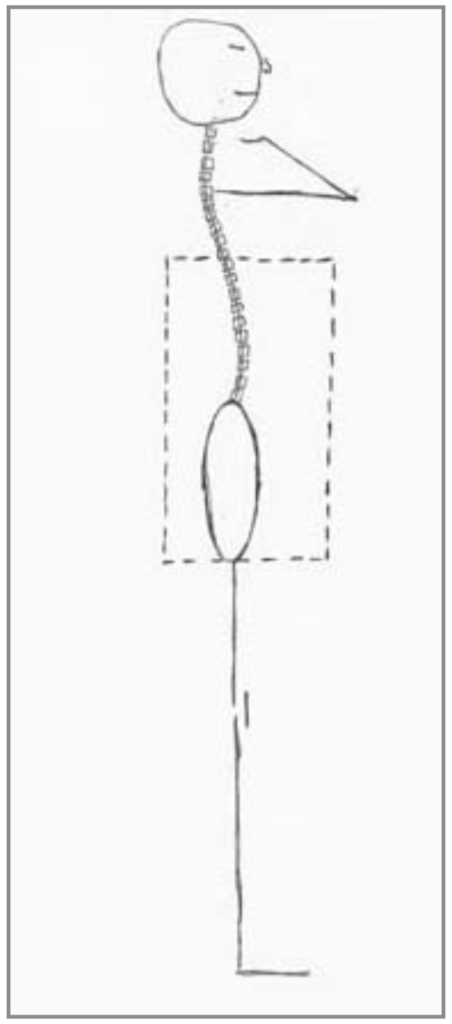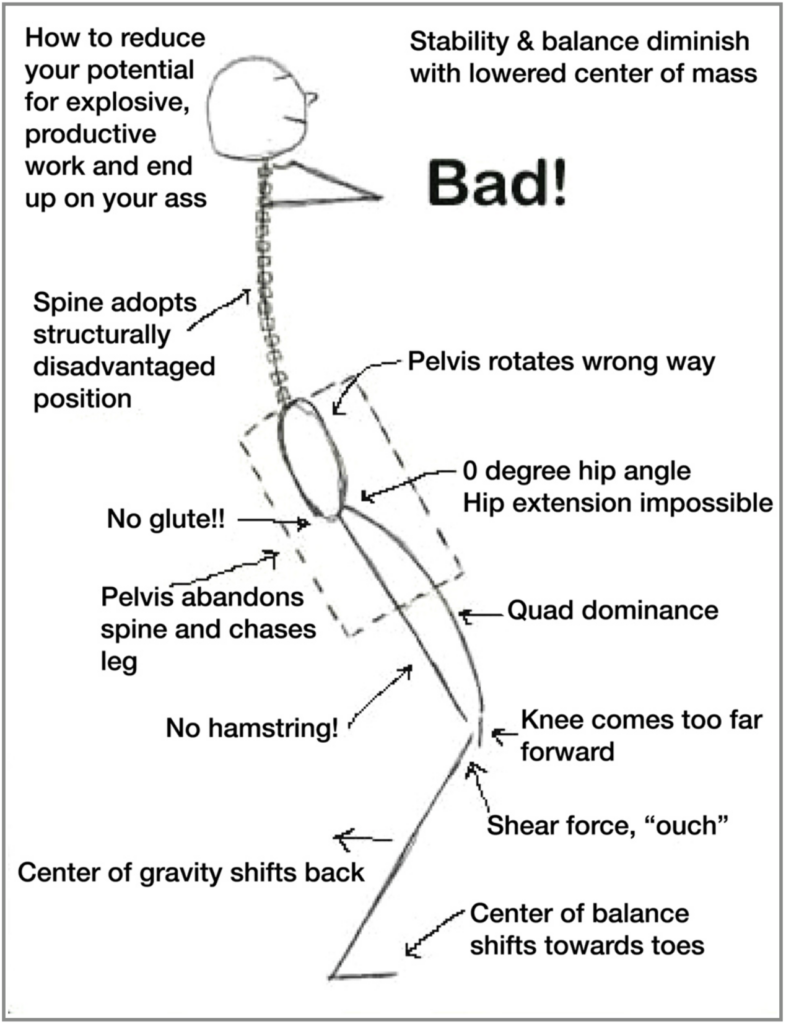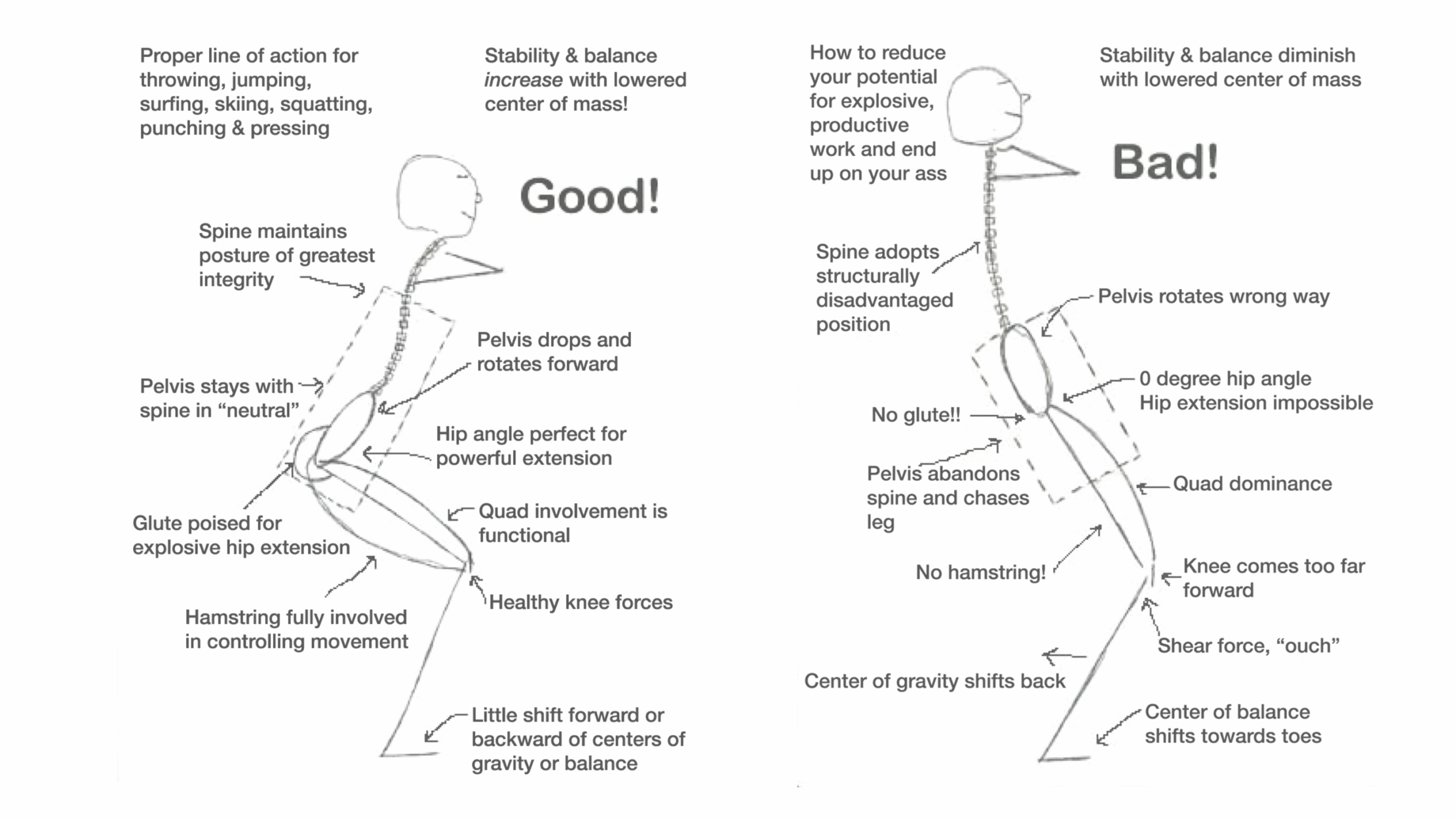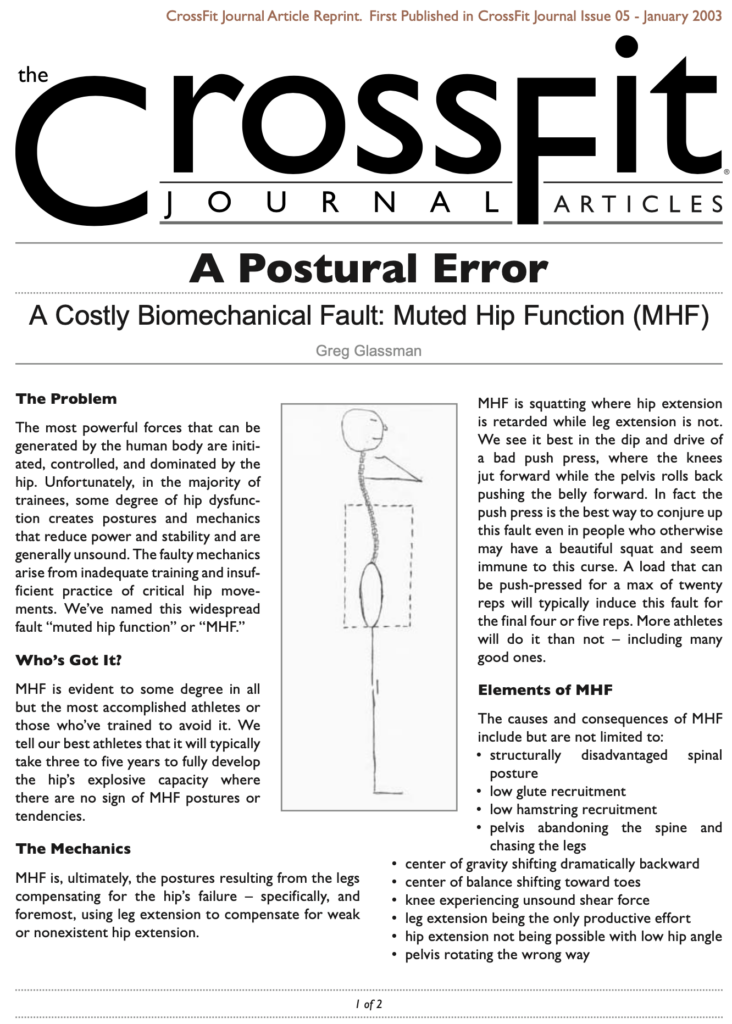The Problem
The most powerful forces that can be generated by the human body are initiated, controlled, and dominated by the hip. Unfortunately, in the majority of trainees, some degree of hip dysfunction creates postures and mechanics that reduce power and stability and are generally unsound. The faulty mechanics arise from inadequate training and insufficient practice of critical hip movements. We’ve named this widespread fault “muted hip function” or “MHF.”
Who’s Got It?
MHF is evident to some degree in all but the most accomplished athletes or those who’ve trained to avoid it. We tell our best athletes that it will typically take three to five years to fully develop the hip’s explosive capacity where there is no sign of MHF postures or tendencies.
The Mechanics
MHF is, ultimately, the postures resulting from the legs compensating for the hip’s failure—specifically, and foremost, using leg extension to compensate for weak or nonexistent hip extension.

MHF is squatting where hip extension is retarded while leg extension is not. We see it best in the dip and drive of a bad push press, where the knees jut forward while the pelvis rolls back, pushing the belly forward. In fact, the push press is the best way to conjure up this fault even in people who otherwise may have a beautiful squat and seem immune to this curse. A load that can be push-pressed for a max of 20 reps will typically induce this fault for the final four or five reps. More athletes will do it than not – including many good ones.
Elements of MHF
The causes and consequences of MHF include but are not limited to:
• structurally disadvantaged spinal posture
• low glute recruitment
• low hamstring recruitment
• pelvis abandoning the spine and chasing the legs
•center of gravity shifting dramatically backward
• center of balance shifting toward toes
• knee experiencing unsound shear force
• leg extension being the only productive effort
• hip extension not being possible with low hip angle
• pelvis rotating the wrong way
The most important effect of all these elements—and of MHF overall—is a marked decrease in stability, balance, and power.


The Damage
The degree of MHP varies from mild to severe. In severe cases, everything the athlete attempts is rocked by instability and low power. In mild cases, power loss and instability occur only while under great physical stress. In combat and elite performance, even mild MHF can lose the day.
For physical performance, what could be worse than low power and instability?
The Solution
Deliberate and focused training and practice of demanding hip-extension movements is the only way to eliminate the effects of MHF. Again, it will typically take three years or more to eliminate all tendencies toward MHF.
No exercise offers as much opportunity to correct MHF tendencies as perfect-form, high-rep push press. MHF is evident within the first .01 of a second of a bad push press.
This article, by BSI’s co-founder, was originally published in The CrossFit Journal. While Greg Glassman no longer owns CrossFit Inc., his writings and ideas revolutionized the world of fitness, and are reproduced here.
Coach Glassman named his training methodology ‘CrossFit,’ which became a trademarked term owned by CrossFit Inc. In order to preserve his writings in their original form, references to ‘CrossFit’ remain in this article.
- Download Original PDF
- Download Español (Spanish) PDF
- Download Português (Portuguese) PDF
- Download Italiano (Italian) PDF
- Download Français (French) PDF
Greg Glassman founded CrossFit, a fitness revolution. Under Glassman’s leadership there were around 4 million CrossFitters, 300,000 CrossFit coaches and 15,000 physical locations, known as affiliates, where his prescribed methodology: constantly varied functional movements executed at high intensity, were practiced daily. CrossFit became known as the solution to the world’s greatest problem, chronic illness.
In 2002, he became the first person in exercise physiology to apply a scientific definition to the word fitness. As the son of an aerospace engineer, Glassman learned the principles of science at a young age. Through observations, experimentation, testing, and retesting, Glassman created a program that brought unprecedented results to his clients. He shared his methodology with the world through The CrossFit Journal and in-person seminars. Harvard Business School proclaimed that CrossFit was the world’s fastest growing business.
The business, which challenged conventional business models and financially upset the health and wellness industry, brought plenty of negative attention to Glassman and CrossFit. The company’s low carbohydrate nutrition prescription threatened the sugar industry and led to a series of lawsuits after a peer-reviewed journal falsified data claiming Glassman’s methodology caused injuries. A federal judge called it the biggest case of scientific misconduct and fraud she’d seen in all her years on the bench. After this experience Glassman developed a deep interest in the corruption of modern science for private interests. He launched CrossFit Health which mobilized 20,000 doctors who knew from their experiences with CrossFit that Glassman’s methodology prevented and cured chronic diseases. Glassman networked the doctors, exposed them to researchers in a variety of fields and encouraged them to work together and further support efforts to expose the problems in medicine and work together on preventative measures.
In 2020, Greg sold CrossFit and focused his attention on the broader issues in modern science. He’d learned from his experience in fitness that areas of study without definitions, without ways of measuring and replicating results are ripe for corruption and manipulation.
The Broken Science Initiative, aims to expose and equip anyone interested with the tools to protect themself from the ills of modern medicine and broken science at-large.
Support the Broken Science Initiative.
Subscribe today →
recent posts
Medical Society Webinar with David Wiss




